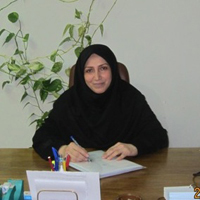Institutional capacity and sustainable regional development (Case study: Bojnourd and Raz and Jorglan counties, North Khorasan province)
Regional sustainable development is influenced by many variables, and institutional capacity is one of them. If institutions have significant capacity, development is more possible, that's why this subject has a special importance for study. However, there are fundamental challenges in using the institutional capacities, which, especially in developing countries, have endangered the goals of sustainable development more than before and should be discussed and investigated.
This research aims to answer two questions with a comparative study of Bojnord and Raz and Jorglan in North Khorasan province. 1- What is the level of institutional capacity in the study areas? 2- What is the relationship between institutional capacity and regional sustainable development? The statistical population of the research is at the level of institutional employees and civil society, from which 400 samples have been selected from each of them.
The results of the research based on the independent one-sample t-test show that according to the employees, the average of the institutional capacity components in Bojnord is equal to 2.63 and in Raz and Jorglan it is 2.44, which is lower than the average. According to the opinions of the civil society, institutional measures in line with the sustainable development of the region are 2/44 in Bojnord and 2/37 in Raz and Jorglan, which can confirm the obtained results with a 95% confidence level and realize the unfavorable performance of the institutions. Also, the results of Pearson's test show a positive and significant relationship between some research components. In Raz and Jarglan, as one of the most deprived areas of North Khorasan province, the situation is far more critical than in Pebjnoord as the capital of the province. Because, on the one hand, the institutional capacity is extremely low, and on the other hand, the performance of the institutions, in parallel with their capacity, has had very little effects on the process and institutionalization of sustainable development. Although this pattern is also true in Bojnord, but to some extent its situation is more hopeful and more favorable than Raz and Jarglan.
The results of this research are related to the study areas and its generalizability may not be confirmed in other regions of the country and the world because there is a big difference between the development process and the degree of development of societies as well as the executive systems of countries. Finally, executive proposals have been presented, such as "providing incentives for institutions to improve service delivery and more optimal and desirable functions."
- حق عضویت دریافتی صرف حمایت از نشریات عضو و نگهداری، تکمیل و توسعه مگیران میشود.
- پرداخت حق اشتراک و دانلود مقالات اجازه بازنشر آن در سایر رسانههای چاپی و دیجیتال را به کاربر نمیدهد.



